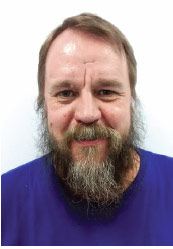 |
 |
 |
|
April 2015 |
On the trail of a comet: Scientist on groundbreaking space mission visits Campus, UWI plays its part
“This to me is the most significant scientific achievement of this century,” says Professor Indar Ramnarine, Dean of the Faculty of Science and Technology. It is indeed. For the first time in human history, man has landed a probe on a comet. Professor Ramnarine was speaking at an event hosted by the Department of Physics and the Caribbean Institute of Astronomy titled “Trailing a Comet”. The feature speaker was Professor Harry Lehto, a member of the European Space Agency (ESA) team that landed the probe, named “Rosetta” after the famed Rosetta Stone used by archaeologists to decode the secrets of Ancient Egypt. Professor Lehto came to “tell the story of a comet,” he explained to attendees at the February 26 event at Daaga Auditorium. Surprisingly, he also visited the St Augustine Campus because of the university’s very specific role in the comet’s story. Professor Lehto, or “Harry” as he prefers to be called, is an astrobiologist at the Tuorla Observatory of the University of Turku in Finland. “I study some of the questions that people have pondered forever,” he explains, speaking in a slow and thoughtful manner, smiling behind a long swirling beard. “I look at things like where did life start and how did life begin. What was the earth like 4.5 billion years ago?” By studying data from the Comet 67 P he hopes to come closer to the answers. Comets are believed to be the oldest bodies in the solar system, on which the earliest materials from which our sun and planets were formed have been preserved. “We are looking for molecules for the precursor of life,” Harry says. The Rosetta Mission sent the probe on a 10-year, 6.4 billion kilometer journey through space to intercept the comet. To understand how far that is, the distance of the Earth from the Sun is a mere 150 million kilometers. The probe lander “Philae” touched down on the comet in November of 2014. The mission will end in December 2015 after it passes the sun and travels back to the outer solar system. Harry is no stranger to Trinidad or the St Augustine Campus. The university’s SATU Observatory, which contains a 40 cm Meade Schmidt-Cassegrain telescope, is a joint venture with the University of Finland. In fact, Trinidad’s position close to the Equator means that it is well suited to capture Comet 67 P as it emerges from behind the Sun this month. “(Our location) puts us in a very favourable position to view the comet,” says Dr. Shirin Haque, Deputy Dean and Senior Lecturer in Astronomy. Asked what it’s like to study such mysteries and primordial forces, Harry smiles, “humbling. It makes you humble to see your own smallness in the scope of things. That’s why I don’t get caught up in titles.” |

 As you read this, a comet is hurtling its way through the solar system some 400 million kilometers away from earth. That in itself is nothing unusual. There are over 5,000 known comets (icy collections of dust and rock particles) and many billions more out in the vastness of space. What makes this comet different – Comet 67 P/Churyumov-Gerasimenko, as it has been named – is that scientists have managed to attach a probe to its surface.
As you read this, a comet is hurtling its way through the solar system some 400 million kilometers away from earth. That in itself is nothing unusual. There are over 5,000 known comets (icy collections of dust and rock particles) and many billions more out in the vastness of space. What makes this comet different – Comet 67 P/Churyumov-Gerasimenko, as it has been named – is that scientists have managed to attach a probe to its surface.